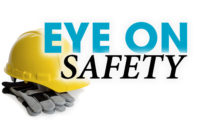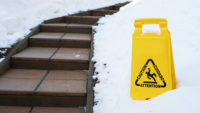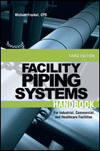Eye on Safety: Fall protection

Any time there is a business that has employees, whether that number is two or in the thousands, the fact is the more you have, the more your overall risks increase.
Yes, the word “risk” is broad, but in terms of fall protection, we have to think of what can happen, before something happens. The more people in the business, the more potential hazards or other issues arise that cause events that we far too often tend to take for granted. It’s the issue of, “Well it has not happened yet, so nothing is going to happen to me.” Until one day a hazard or unknown event occurs and then you hear about the slip, trips and falls.
While there are many things governed by regulatory bodies such as OSHA, we do not need them to tell us how to prevent or what we can do to be aware. It is much cheaper to stay in compliance than reactively put something into place because of penalties, insurance premium increases or even worker’s compensation. There are things we can do to prevent and mitigate some of the risks (let’s be honest, business is risky, you cannot eliminate the risk).
What are some of the common types of falls?
- Standard slips and trips — cords, lack of proper footwear, uniform malfunction.
- Falls due to loading or unloading.
- Ladders not supported or used appropriately.
- Horseplay, carelessness and laziness.
- Not keeping feet on firm ground — climbing or the act of some sort of multitasking or even improperly using tools such as forklifts or pallet jacks.
- Hazards — oils, greases, fuel, other liquids, boxes, etc.
Now what do we do about preventing or taking steps to ensure we all do not think it cannot happen to us (it can and it will).
- Ensure proper housekeeping methods are in order: this depends on how you want your business to operate, but simply, walk around and ensure there is nothing on the floors or things that could cause a slip, trip or fall. This may be cords in the warehouse or around the office (can happen in all areas). There could be items on the floor in your break rooms. How about the entryways into the buildings? This can go on and on.
- Hire good people who do not cut corners; corner cutters cost more money to your business.
- Educate team members on what can happen by holding a safety meeting or simply discussing in team intervals.
- Show people that you care; incentivize people for good behaviors or institute a reward program (be sure to follow guidelines of IRS Publication 15b).
- Be consistent and clear. And the more you care, the more your team will care. It begins and ends with culture.
Simply put, a lot of the above are what we would consider common sense to most, but everyone needs reminding, and it never hurts to start today.
So when you are walking around and see something “hazardous,” take the steps necessary to address it. Make sure you incorporate this into a regular routine. It will save you and your team time and money.
Looking for a reprint of this article?
From high-res PDFs to custom plaques, order your copy today!








